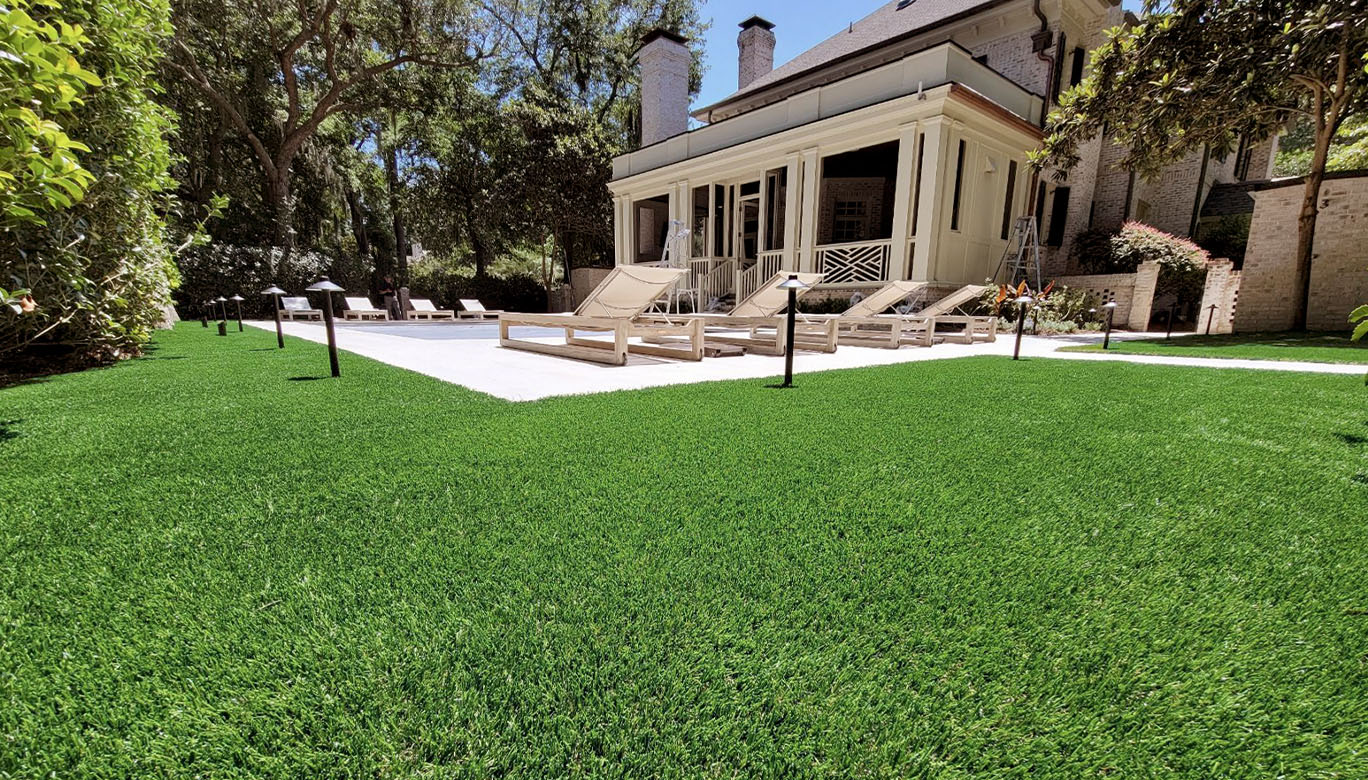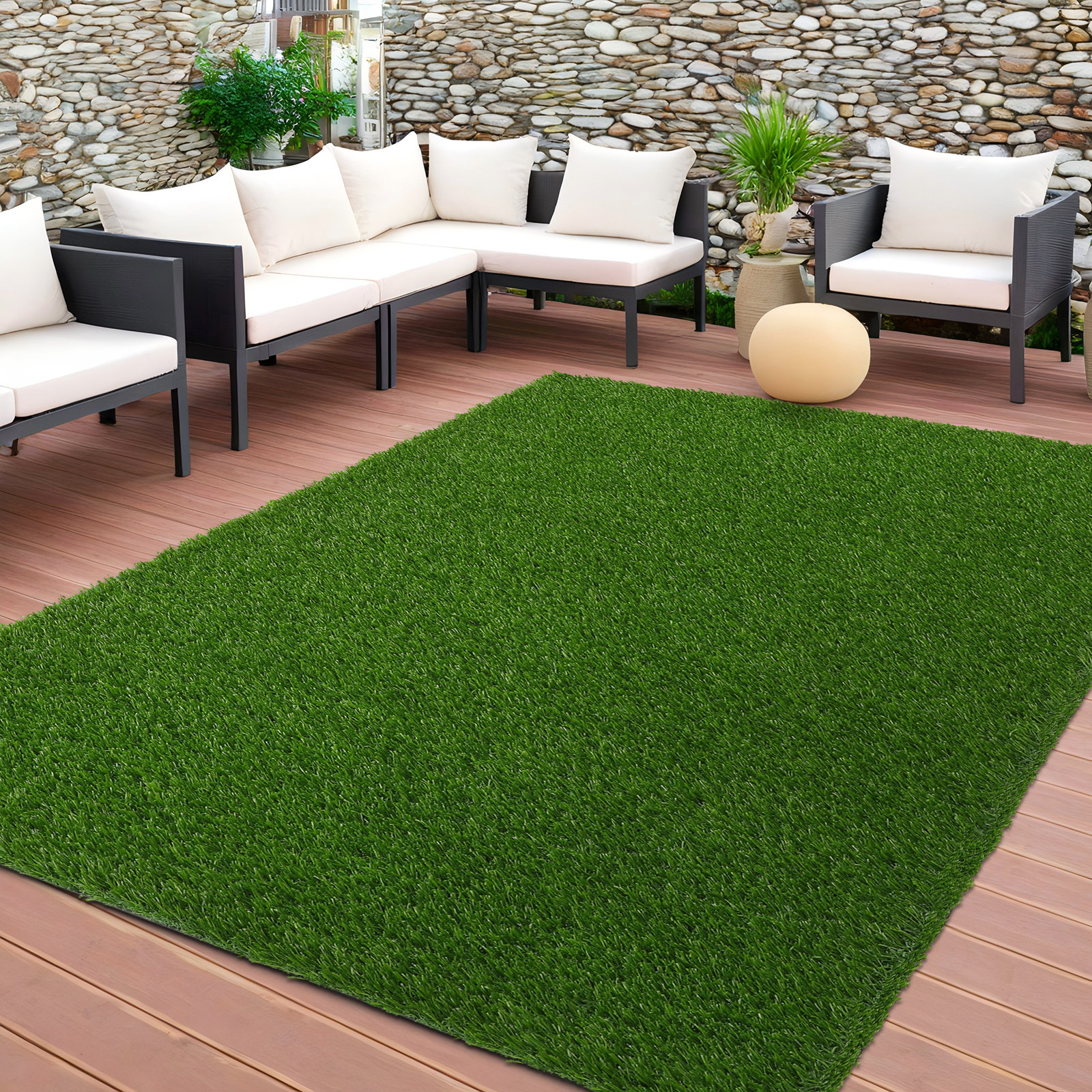Delve Into the Environmental Conveniences of Opting for Artificial Turf Solutions
The adoption of man-made lawn services presents a compelling chance to resolve pressing environmental difficulties. By significantly reducing water usage and minimizing the application of damaging chemicals, these choices not just advertise lasting landscape design but additionally secure neighborhood ecosystems.
Water Conservation Conveniences
Among the most significant benefits of man-made grass is its capacity to save water. Standard yard yards call for considerable watering, specifically in locations susceptible to dry spell or water limitations. In comparison, synthetic grass does not need watering, considerably decreasing the general need for water resources. This feature is specifically advantageous in arid regions where water scarcity is a pressing problem.
By getting rid of the need for routine watering, synthetic grass adds to sustainable landscape techniques and helps reduce the ecological influence of too much water usage. Furthermore, the preservation of water includes the decrease of runoff, which can bring about dirt disintegration and river air pollution.
Furthermore, the installation of synthetic grass allows communities and home owners to allot water sources extra efficiently, focusing on necessary usages such as alcohol consumption water and farming. The shift towards synthetic grass not only advertises liable water use yet also straightens with more comprehensive ecological objectives targeted at maintaining all-natural sources.
As neighborhoods progressively focus on sustainability, the water preservation benefits of synthetic grass provide a compelling case for its fostering in industrial and residential landscape design projects.
Reduced Chemical Use
The shift to man-made lawn dramatically lowers the reliance on chemical treatments typically used in all-natural lawn maintenance. Conventional turf monitoring commonly includes the application of herbicides, fertilizers, and chemicals to advertise growth and control insects. These chemicals can posture dangers to human health, regional wild animals, and the setting, contributing to dirt and water contamination.
On the other hand, fabricated lawn gets rid of the demand for these unsafe substances. As soon as installed, it needs minimal upkeep, primarily including normal cleansing and irregular infill replenishment. This decrease in chemical usage not just profits the instant setting yet likewise adds to broader environmental stability. By minimizing the release of synthetic substances into the ecosystem, man-made lawn advertises much healthier dirt and water supply.
Moreover, the lack of chemical overflow related to fabricated lawn installments helps safeguard regional waterways from air pollution, supporting aquatic life and maintaining biodiversity. Phoenix turf companies. As communities progressively prioritize sustainable practices, going with artificial lawn offers a viable option that straightens with environmental conservation goals. With this change, homeowner can appreciate lavish green spaces without endangering eco-friendly health and wellness, leading the way for a more lasting future
Lower Carbon Impact

Furthermore, the setup of synthetic grass can cause considerable water conservation. Natural yards call for significant amounts of water for irrigation, which not just includes in the carbon footprint associated with water extraction and therapy yet likewise strains local water resources. On the other hand, artificial lawn needs very little upkeep, requiring no watering, thereby significantly reducing water use and its linked power costs.
Furthermore, the longevity of man-made lawn adds to its reduced carbon effect. With a life-span of approximately 15 years or even more, the demand for regular replacements is decreased, leading to less waste and lower power usage in manufacturing and dealing with standard yard choices. Overall, artificial lawn presents a lasting alternative for eco mindful landscape design.
Environment Preservation
Habitat conservation is a crucial consideration in the dispute over landscaping options, particularly when contrasting synthetic grass to natural turf. Natural turf yards usually call for substantial maintenance, including making use of herbicides, fertilizers, and chemicals, which can adversely influence local ecosystems. These chemicals can seep into the dirt and rivers, hurting indigenous vegetation and animals and interrupting local environments.
On the other hand, synthetic grass provides an opportunity to lower the environmental impact of landscaping. By going with artificial turf, home owners can reduce the disturbance of natural environments related to traditional yard treatment practices. Fabricated grass removes the need for unsafe chemicals, thus protecting close-by wild animals and keeping the integrity of bordering communities. Additionally, the installment of synthetic grass can lead to the conversion of former grass areas right into even more biodiverse useful site landscapes, such as pollinator yards or native plant locations, which can support regional wildlife.
Inevitably, the change to fabricated turf not only preserves water and lowers upkeep initiatives yet additionally cultivates a much more unified partnership in between human activities and the natural environment, promoting habitat conservation at the same time.
Long-Term Sustainability
Long-lasting sustainability is an important consider examining the advantages of artificial turf over traditional yard yards. One of the most substantial advantages of synthetic turf is its resilience; it can last up to 15-20 years with marginal maintenance, whereas all-natural grass requires constant reseeding and replacement. This long life decreases the demand for consistent resources, such as water, fertilizers, and chemicals, which are vital for keeping a healthy turf yard.
In addition, man-made turf adds to a reduction in carbon emissions related to grass care tools. Typical grass commonly need gas-powered mowers, trimmers, and blowers, all of which add to air contamination. Turf installation phoenix az. In comparison, synthetic grass gets rid of the demand for such equipment, promoting a cleaner atmosphere
Additionally, the production of synthetic grass increasingly uses recycled products, boosting its sustainability account. As makers adopt green practices, the environmental footprint of fabricated turf continues to reduce.

Verdict
The adoption of man-made lawn remedies offers considerable ecological benefits, consisting of significant water preservation, reduced reliance on unsafe chemicals, and a reduced carbon impact. Fabricated grass aids in maintaining all-natural habitats by minimizing land disruption and advertising lasting sustainability via the use of durable products. Jointly, these aspects underscore the possibility of man-made lawn to add positively to environmental wellness and provide a sensible choice to standard landscaping techniques in a significantly resource-conscious globe.
In comparison, synthetic lawn does not need watering, considerably minimizing the general demand for water sources. By minimizing the release of artificial substances right into the community, synthetic turf promotes healthier dirt and water systems.
Furthermore, the setup of artificial grass find out here can result in considerable water preservation. In contrast, fabricated grass requires minimal upkeep, requiring no watering, consequently substantially decreasing water use and its linked energy expenses.
